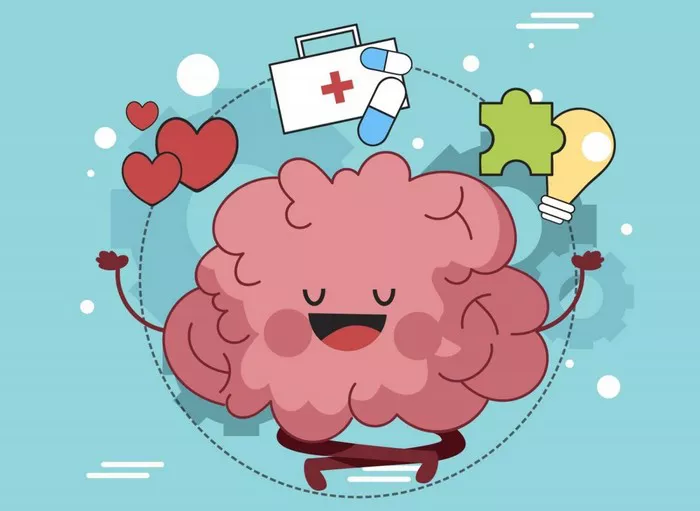1. Validate and Explain: Acknowledge the distress of Pure O
Living with Pure Obsessional OCD (Pure O) can be an incredibly distressing experience. It’s crucial to acknowledge the significant challenges individuals face when dealing with intrusive thoughts and mental rituals. Pure O is a subtype of obsessive-compulsive disorder (OCD) characterized by intrusive, unwanted thoughts or images, without obvious outward compulsions. These intrusive thoughts often center around themes of harm, violence, taboo, or unacceptable behaviors, leading to immense distress and anxiety.
Clearly define Pure O
Pure O is not well understood by many, often leading to misconceptions or trivialization of the condition. Unlike traditional OCD where outward compulsions are more apparent (such as excessive hand washing or checking), Pure O primarily involves internal mental rituals. Individuals with Pure O engage in repetitive, distressing thoughts or mental images, leading to intense anxiety and discomfort. It’s important to differentiate Pure O from other forms of OCD to ensure proper recognition and treatment.
Address the “curable” question directly
When considering the question of whether Pure OCD is curable, it’s essential to provide realistic expectations. While complete eradication of intrusive thoughts might not be possible for everyone, significant symptom reduction and effective management are achievable goals. With the right treatment and support, individuals can learn to manage their symptoms and lead fulfilling lives.
2. Offer Evidence-Based Hope: Highlight the effectiveness of treatment
The good news is that there are highly effective treatments available for Pure O, primarily Cognitive Behavioral Therapy (CBT) with a focus on Exposure and Response Prevention (ERP). CBT helps individuals identify and challenge their irrational thoughts and beliefs, while ERP involves gradually exposing oneself to anxiety-provoking situations or triggers without engaging in compulsive behaviors. Research has consistently shown CBT with ERP to be highly effective in reducing symptoms of Pure O.
Include success stories
Numerous individuals have successfully managed their Pure O through treatment. For example, Sarah struggled with intrusive thoughts of harming her loved ones for years. Through CBT with ERP, she learned to challenge her fears and gradually face situations that triggered her intrusive thoughts. While the thoughts haven’t completely disappeared, Sarah has regained control over her life and significantly reduced the impact of her obsessions.
Focus on improving quality of life
It’s important to emphasize that the goal of treatment isn’t necessarily to eliminate intrusive thoughts altogether, but rather to help individuals regain control over their lives and reduce the distress caused by obsessions. Treatment can significantly improve quality of life by providing individuals with coping strategies and tools to manage their symptoms effectively.
3. Provide Practical Guidance: Offer actionable steps
If you or someone you know is struggling with Pure O, there are steps you can take to seek help. Start by finding a therapist specializing in OCD and CBT. The International OCD Foundation (IOCDF) is a valuable resource for finding qualified therapists and obtaining information about OCD and its treatment options.
Link to resources
For further information and support, consider reaching out to organizations like the International OCD Foundation (IOCDF) or Anxiety and Depression Association of America (ADAA). These organizations offer resources, support groups, and educational materials for individuals affected by OCD and related disorders.
Encourage self-help strategies
While therapy is essential for managing Pure O, there are also self-help strategies that can complement treatment. Practices such as mindfulness, meditation, and journaling can help individuals develop awareness of their thoughts and emotions, ultimately empowering them to respond to intrusive thoughts more effectively.
4. Maintain Ethical Considerations: Avoid guaranteeing a “cure”
It’s important to be honest and transparent about the limitations of treatment. While therapy can be highly effective in managing Pure O, complete eradication of symptoms is not guaranteed for everyone. Each individual’s journey is unique, and progress may take time and persistence.
Discourage self-diagnosis
Encourage readers to seek professional diagnosis from a qualified mental health professional rather than self-diagnosing. Only a trained professional can provide an accurate assessment and recommend appropriate treatment options tailored to the individual’s needs.
Promote professional help
Finally, emphasize the importance of seeking professional help for effective management of Pure O. Working with a therapist who specializes in OCD and CBT can make a significant difference in one’s ability to manage symptoms and lead a fulfilling life.
Conclusion
In conclusion, while Pure OCD presents real and significant challenges, effective treatment options are available to help individuals manage their symptoms and improve their quality of life. By seeking help from qualified professionals, engaging in evidence-based treatments, and utilizing self-help strategies, individuals with Pure O can learn to regain control over their lives and find relief from the distressing symptoms of the disorder.
FAQs
What is the hardest type of OCD to treat?
The hardest type of OCD to treat varies among individuals, but some clinicians consider severe contamination OCD or violent or taboo obsessions to be particularly challenging due to the distress and avoidance behaviors they can trigger.
Does OCD ever go away?
OCD symptoms can fluctuate over time, with periods of remission and relapse. For some individuals, symptoms may diminish significantly or even disappear entirely with treatment, while others may experience persistent symptoms that require ongoing management.
How did I cure my OCD naturally?
Some people find relief from OCD symptoms through natural methods such as mindfulness, regular exercise, stress management techniques, and maintaining a healthy lifestyle. However, it’s essential to consult with a qualified mental health professional to develop a comprehensive treatment plan tailored to your specific needs.
Related topics:
- Is PTSD Considered a Mental Disability?
- Is PTSD Normal?
- Effective Therapies for PTSD: A Comprehensive Guide


